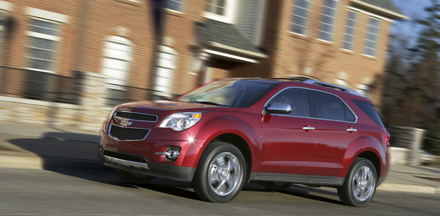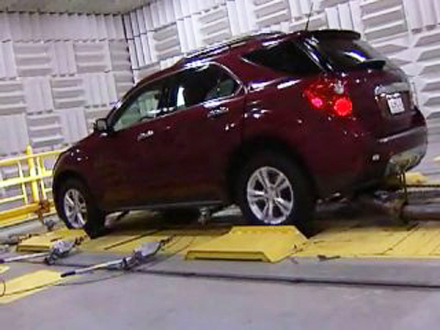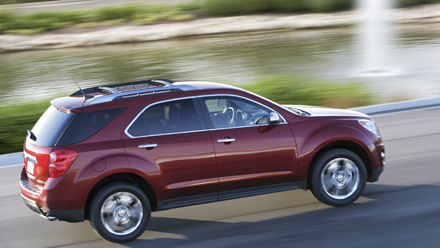USA: How headphone noise-cancelling technology is making cars more fuel-efficient

Noise-cancelling headphones – they keep the sound of the outside world at bay, allowing you to enjoy your music in peace on trains, planes and buses. But now the same technology is being used by a US car manufacturer to make its cars more fuel-efficient.
The system is now available as standard on four-cylinder versions of Chevrolet's Equinox SUV (above), and has enabled the vehicle to get better 'highway gas mileage' – as the Americans call it – than rivals such as the Honda CR-V, Toyota RAV4 and Ford's Escape.

The solution, enabling the 2011 Equinox to deliver 32mpg (around 38.5mpg in UK terms, or 7.35 litres per 100km) on the highway from its 2.4l four-cylinder motor, is simple: the engine is run slower for a given road-speed.
Trouble is, according to GM Noise and Vibration Development Engineer Jim Vallance (left), 'There’s a boom, or very low frequency rumble that comes from the engine when it runs in that RPM range.'
Enter headphone-type noise-cancellation, applied to the vehicle at the GM facility in Milford, Michigan (below): 'We knew if we could deaden those booms, we could run the engine at the lower RPM, which would provide a significant boost to fuel economy.

'So we started kicking around ideas and came up with noise cancellation like you see in some high-end stereo headphones.'
However, it's not as easy to do noise-cancellation inside a car as it is in a pair of headphones, given that as well as the boom from the engine, there's also road noise, the sound from the in-car entertainment system and even conversation between the occupants of the vehicle.
Get the What Hi-Fi? Newsletter
The latest hi-fi, home cinema and tech news, reviews, buying advice and deals, direct to your inbox.
So the engineers needed to tale what's described as 'a surgical approach' to the noise cancellation, using monitors on the engine to detect when it's running in the boomy 1000-1500rpm range, trigger the noise-cancellation, and eliminate the unwanted sound.
'We take a proactive approach and target only the unwanted sound in the vehicle, which in this case is linked with the engine firing frequency. Then we eliminate it,' says Vallance.

Andrew has written about audio and video products for the past 20+ years, and been a consumer journalist for more than 30 years, starting his career on camera magazines. Andrew has contributed to titles including What Hi-Fi?, Gramophone, Jazzwise and Hi-Fi Critic, Hi-Fi News & Record Review and Hi-Fi Choice. I’ve also written for a number of non-specialist and overseas magazines.
